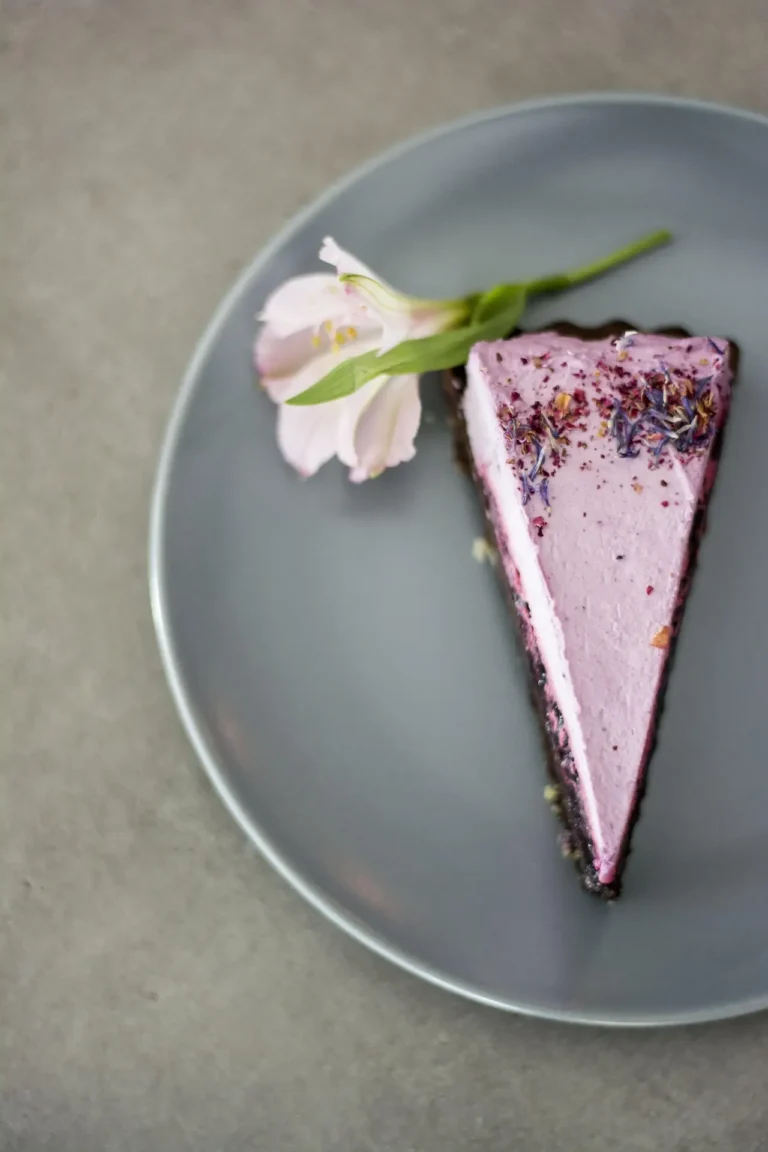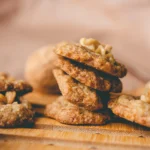Banana bread is a timeless classic, but what if you don’t need a whole loaf? Whether you’re cooking for yourself or sharing a treat with someone special, this small banana bread recipe is perfect for two. It’s quick, simple, and made with just a few pantry staples. No more letting those ripe bananas go to waste—this recipe is designed to transform them into a moist, flavorful loaf in no time.
Perfect for beginner bakers or anyone craving a cozy homemade dessert, this small-batch banana bread is easy to whip up and just the right size. Plus, it bakes in under 30 minutes, making it an ideal choice for a last-minute snack or a special breakfast treat. Let’s dive into the details of creating this delicious, no-fuss banana bread!
Why Choose a Small Banana Bread Recipe?
Sometimes, a full-sized loaf of banana bread can feel like too much, especially when you’re baking for just one or two people. That’s where a small banana bread recipe comes in handy! Here are a few reasons why this scaled-down version might be the perfect choice for your next baking project:
1. Perfect for Small Households or Couples
A small banana bread recipe is designed for those who don’t need a large loaf sitting on the counter. It’s perfectly portioned for two servings, making it ideal for couples, singles, or anyone who enjoys freshly baked treats without the commitment of leftovers.
2. Reduces Waste
Have just one or two overripe bananas lying around? This recipe helps you make the most of them. Unlike traditional recipes that call for multiple bananas, this small-batch version ensures you can bake something delicious without wasting ingredients or letting bananas go bad.
3. Quick and Convenient
Small-batch baking means less prep time, less baking time, and less clean-up. This recipe is perfect for when you’re short on time but craving a warm, comforting snack or dessert. It’s especially great for last-minute plans or when you need a quick treat for two.
4. Encourages Variety
Instead of committing to a full loaf, a small recipe lets you experiment with flavors and add-ins. Want to try chocolate chips, walnuts, or even a sprinkle of cinnamon? With a smaller loaf, you can easily customize your banana bread without worrying about a big batch not turning out as expected.
5. A Great Intro to Baking
For beginner bakers, a small banana bread recipe is an excellent starting point. The simple steps and manageable portion size make it less intimidating than tackling a full loaf. Plus, the smaller size bakes faster, giving you quicker results and boosting your confidence in the kitchen!
In summary, a small banana bread recipe is not just practical—it’s also versatile and fun. It’s the perfect solution for anyone who wants the comforting taste of homemade banana bread in a smaller, more manageable portion. Once you try it, you’ll see why it’s such a great choice for quick and satisfying baking!
Ingredients Needed for Small Banana Bread
Creating the perfect small banana bread requires just a few simple ingredients, many of which you likely already have in your pantry. Here’s a closer look at what you’ll need to make this quick, flavorful treat for two.
1. Ripe Bananas
The star of the show, ripe bananas are essential for banana bread. As bananas ripen, their starches convert into sugars, resulting in a sweeter, more moist bread. For the best flavor, use bananas that are heavily speckled or even turning brown. These overripe bananas are soft, easier to mash, and impart more natural sweetness to your banana bread, making them ideal for this recipe.
2. All-Purpose Flour
The foundation of the batter, all-purpose flour gives the banana bread structure and texture. For a lighter, airier loaf, be sure to measure your flour properly—either by spooning it into the measuring cup or using a kitchen scale. If you prefer a slightly denser bread, you can also experiment with whole wheat flour, which adds a nutty flavor and additional fiber.
3. Sugar
Sugar sweetens the banana bread and helps it develop a golden-brown color as it bakes. This recipe typically calls for granulated sugar, but if you want to reduce the sweetness, feel free to experiment with brown sugar for a richer, caramel-like taste. You can also use a combination of both for a balanced flavor profile. For a healthier alternative, consider using honey or maple syrup, but remember to adjust the wet ingredients slightly to compensate for the extra moisture.
4. Butter
Butter not only adds flavor to the bread but also contributes to its moist texture. You can use either unsalted butter for more control over the salt content, or salted butter if that’s all you have on hand. Be sure to melt the butter before mixing it with the other ingredients to ensure smooth incorporation into the batter. For a dairy-free alternative, you can substitute with coconut oil or a plant-based butter.
5. Eggs
Eggs play an essential role in binding the ingredients together and providing structure to the bread. They also add moisture, helping to keep the banana bread soft and tender. Use large eggs for consistency, and if you’re vegan or egg-free, you can replace eggs with mashed flaxseed or chia seeds mixed with water (a common egg substitute).
6. Baking Powder
To ensure your small banana bread rises properly, baking powder is used as the leavening agent. It helps the batter to expand and become light and fluffy as it bakes. If you’re out of baking powder, you can use baking soda (adjusting the amount) or make your own leavening mix with baking soda and cream of tartar.
7. Salt
Though just a pinch, salt balances out the sweetness of the bread and enhances the overall flavor. It helps elevate the banana flavor and offsets the richness of the butter. Don’t skip this ingredient, as it ensures the bread has a rounded, well-seasoned taste.
8. Optional Add-ins
One of the best things about banana bread is how customizable it is! Feel free to add mix-ins like chocolate chips, walnuts, or pecans for extra texture and flavor. You could even add a touch of vanilla extract, cinnamon, or nutmeg for a warm, spiced twist. Just be mindful of how many add-ins you incorporate to avoid overloading the small batch and affecting its texture.
9. Milk (Optional)
Depending on your preference and the ripeness of your bananas, you might need a tablespoon or two of milk to adjust the batter’s consistency. If the bananas are particularly large or wet, you may not need this at all. You can use any milk you prefer, from dairy to almond milk or oat milk for a plant-based option.

Step-by-Step Guide to Making Small Banana Bread
Making small banana bread is simple and quick, even for beginners. Follow these easy steps to bake a delicious loaf that’s perfectly portioned for two!
Step 1: Preheat the Oven and Prepare the Pan
Start by preheating your oven to 350°F (175°C). While it heats up, grease a mini loaf pan (approximately 5×3 inches) with butter or cooking spray. Alternatively, you can line it with parchment paper for easy removal after baking. This ensures that your banana bread won’t stick and comes out of the pan smoothly once it’s done.
Step 2: Mash the Bananas
Peel your ripe bananas and place them in a large bowl. Using a fork or potato masher, mash the bananas until smooth, leaving a few small chunks for texture. The riper the bananas, the easier they’ll mash, and the sweeter your bread will be. You’ll need about 1 to 1 ½ ripe bananas for this recipe, depending on their size.
Step 3: Mix Wet Ingredients
In a separate bowl, melt your butter (if it’s not already melted). Add the melted butter to the mashed bananas, then mix in the egg and sugar. Stir everything together until fully combined. If you’re using any optional add-ins like vanilla extract or spices, add them at this stage.
Step 4: Add Dry Ingredients
In another bowl, whisk together the flour, baking powder, and salt. Gradually add the dry ingredients to the wet mixture, stirring just until combined. Be careful not to overmix—this could result in a dense loaf. If you’re adding nuts or chocolate chips, gently fold them in at this stage.
Step 5: Bake the Banana Bread
Pour the batter into your prepared mini loaf pan and smooth the top. Bake for 25-30 minutes, or until a toothpick inserted into the center comes out clean. Every oven is different, so check the bread at around 25 minutes and adjust if necessary. The top should be golden brown and slightly cracked.
Step 6: Cool and Serve
Once your banana bread is done baking, remove it from the oven and let it cool in the pan for about 10 minutes. Then, transfer it to a wire rack to cool completely. Slice it up and enjoy your freshly baked small banana bread for two!
This simple step-by-step guide will have you enjoying homemade banana bread in no time.
Tips for Perfect Small Banana Bread Every Time
Achieving the perfect small banana bread requires more than just following the recipe. With a few helpful tips, you can ensure that your banana bread turns out moist, flavorful, and perfectly baked every time. Here are some key tips to keep in mind:
1. Use Overripe Bananas for Maximum Flavor
The ripeness of your bananas is crucial to getting the perfect banana bread. Overripe bananas, with their dark, speckled skins, are sweeter and more flavorful than just ripe ones. As bananas ripen, they release more sugars and become softer, which makes them easier to mash and results in a moist, flavorful bread. If your bananas aren’t quite ripe enough, place them in a paper bag to speed up the ripening process.
2. Don’t Overmix the Batter
One of the most common mistakes in banana bread baking is overmixing the batter. When you add the dry ingredients to the wet ingredients, stir gently and only until combined. Overmixing can activate the gluten in the flour, leading to a dense and tough loaf instead of a light and fluffy one. Keep the mixing minimal to maintain a soft texture.
3. Measure Ingredients Properly
Accurate measurements are key to a successful banana bread. When measuring flour, be sure to spoon it into the measuring cup and level it off with a flat edge. Packing flour into the cup can result in using too much, which may make the bread heavy and dry. Similarly, use a kitchen scale for precision, especially if you plan on making multiple batches.
4. Add Extra Moisture with Milk or Yogurt
If your batter looks too thick or dry, a little extra moisture can help. Add a tablespoon or two of milk, yogurt, or even sour cream to the batter. This will help achieve a moist, tender crumb and give the banana bread a slightly richer flavor. If you’re using plant-based milk, it will work just as well as dairy milk.
5. Check for Doneness with a Toothpick
To avoid under- or over-baking your banana bread, always test for doneness using a toothpick or cake tester. Insert it into the center of the loaf—if it comes out clean or with just a few moist crumbs, your banana bread is ready. If the toothpick comes out wet with batter, continue baking for a few more minutes, checking periodically.
6. Cool Before Slicing
Let your banana bread cool in the pan for at least 10 minutes before removing it. This will help it firm up, making it easier to slice without falling apart. After removing it from the pan, let it cool completely on a wire rack. Cutting into the bread too soon can result in a mushy texture and may affect the flavor.
7. Customize with Mix-ins
Feel free to get creative with your banana bread by adding mix-ins such as chocolate chips, walnuts, or pecans. These extras add texture and flavor to the bread. Just be sure not to add too many mix-ins, as they can affect the batter’s consistency. Gently fold them in after mixing the dry ingredients into the wet ingredients to avoid overmixing.
8. Store Properly for Freshness
To keep your banana bread fresh longer, store it in an airtight container at room temperature for up to 3 days. If you want to extend its shelf life, wrap it tightly in plastic wrap and store it in the fridge. Banana bread also freezes well, so if you have leftovers, wrap individual slices in plastic and store them in a freezer bag for up to 3 months.
By following these tips, you’ll achieve perfect small banana bread every time. Whether you’re baking for two or just craving a simple homemade treat, these guidelines will ensure your banana bread is always a success!
Frequently Asked Questions
If you’re new to baking small banana bread or simply looking for some guidance, you may have a few questions. Here are some common queries about this recipe, along with helpful answers to ensure your banana bread turns out perfect every time.
1. Can I use this recipe to make banana muffins instead of a loaf?
Yes! If you’d prefer to make individual banana muffins instead of a loaf, this recipe is easily adaptable. Simply divide the batter into a muffin tin lined with paper liners or greased. Bake at the same temperature, but start checking for doneness after about 18-20 minutes. Use the toothpick test to ensure they are fully baked—if it comes out clean, they’re ready! Muffins tend to cook faster due to their smaller size, so keep an eye on them to avoid overbaking.
2. How long does small banana bread stay fresh?
Small banana bread is best eaten within 2 to 3 days if stored properly. To keep it fresh, store the loaf in an airtight container at room temperature. If you’d like it to last longer, wrap the banana bread tightly in plastic wrap and refrigerate it. For longer storage, you can freeze slices individually and thaw as needed. When stored in the fridge or freezer, banana bread stays moist and flavorful for up to a week (in the fridge) or up to 3 months (in the freezer).
3. Can I double this recipe to make a larger loaf?
Absolutely! If you want a larger batch, you can double the recipe. Simply use a standard loaf pan (approximately 9×5 inches) and increase the baking time by about 10 to 15 minutes. Be sure to test for doneness by inserting a toothpick into the center—if it comes out clean, your loaf is ready. Doubling the recipe is perfect for when you have more people to serve or want leftovers.
4. What are some topping ideas for banana bread?
Banana bread is delicious on its own, but adding a topping can take it to the next level. Here are some tasty options:
- Nut butter: Spread peanut butter, almond butter, or cashew butter on top for a creamy, protein-packed addition.
- Cream cheese: A smear of cream cheese adds richness and tang, making the banana bread even more indulgent.
- Honey or maple syrup: Drizzle a little honey or maple syrup over the top for extra sweetness.
- Coconut flakes: Sprinkle toasted coconut flakes for a tropical touch.
- Chocolate ganache: For a decadent twist, top with a simple chocolate ganache or melted chocolate.
5. Can I make banana bread without eggs?
Yes, you can make a banana bread without eggs by using a simple egg substitute. One of the most popular replacements is a flax egg. To make a flax egg, combine 1 tablespoon of ground flaxseed with 3 tablespoons of water, and let it sit for about 5 minutes to thicken. You can also use mashed applesauce (¼ cup per egg) or a banana (you can add an extra banana to your recipe if you’re omitting the egg). These substitutes will help bind the ingredients and provide moisture without the need for eggs.
6. Can I make banana bread gluten-free?
Yes! If you need a gluten-free version of this banana bread, you can substitute gluten-free all-purpose flour for the regular flour. Make sure the flour blend you choose contains xanthan gum or another binding agent, as this will help the bread rise and hold its shape. Keep in mind that gluten-free flours often absorb more liquid, so you may need to adjust the amount of wet ingredients. Be sure to follow the instructions on the flour blend package for the best results.
7. How do I know when the banana bread is done?
The best way to check if your banana bread is done is by using the toothpick test. Insert a toothpick or cake tester into the center of the bread—if it comes out clean or with a few moist crumbs, the bread is ready. If the toothpick comes out wet with batter, continue baking for another 5-10 minutes, checking periodically. Also, look for a golden brown crust and a slight crack in the top as indicators that the bread is baked through.
By addressing these frequently asked questions, we hope to make your baking experience even easier and more enjoyable. Whether you’re a beginner or an experienced baker, these tips will ensure your small banana bread turns out perfectly every time!

Baking a small banana bread for two is not only a delightful treat, but it’s also a practical and quick way to enjoy a homemade dessert without the need for a large batch. With simple ingredients, easy steps, and plenty of room for creativity, this recipe is perfect for beginner bakers or anyone looking to satisfy their banana bread cravings in a smaller, more manageable portion.
By following the tips and tricks shared throughout this post—such as using overripe bananas, properly measuring ingredients, and checking for doneness with a toothpick—you can ensure that your banana bread comes out perfectly moist and flavorful every time. Plus, with the ability to customize it with mix-ins or toppings, you can make each loaf your own.
Whether you’re baking for yourself, a loved one, or looking to experiment with new flavors, this small banana bread recipe is sure to be a hit. Happy baking, and enjoy your delicious, homemade banana bread!









